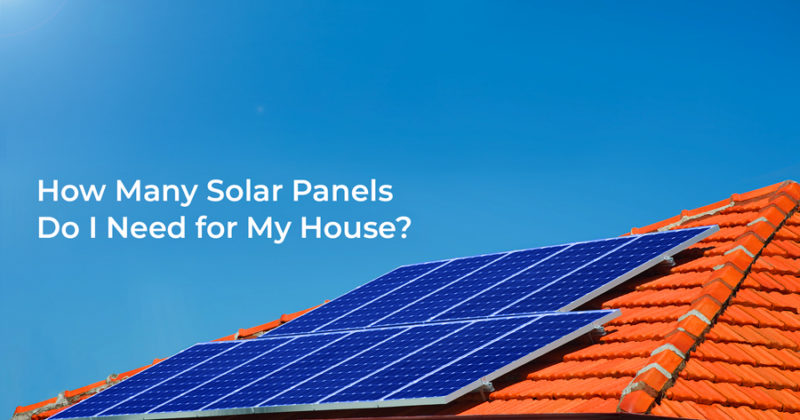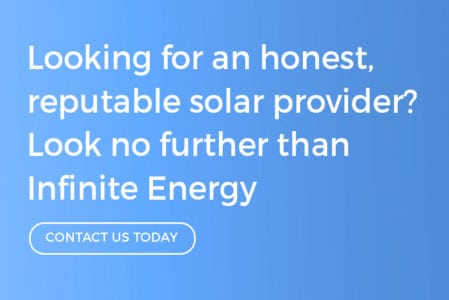How Many Solar Panels Do I Need For My House?

Residential solar power in Australia is booming; as of 30 June 2020, there are over 2.46 million PV installations in Australia, with a combined capacity of over 18.5 gigawatts. That’s over 20% of Australian homeowners who are enjoying cheaper electricity bills, thanks to their rooftop solar systems!
If you are planning to invest in solar for your home, you might be wondering how many solar panels you will need in order to get the most value out of your solar power system. But how do you work out what size solar PV system you need?
Not all solar panels are created equal
Once a homeowner makes the decision to “go solar”, one of the first questions we get asked is: “How many solar panels do I need to install on my house?” However, there is a variance of power classes in panels, across different brands and ranges so you need to focus on the total size of the system (in kilowatts) rather than simply the number of panels.
The current market for solar panels (often called PV panels) sees panels ranging in power class from 300W. If all solar panels had the same wattage, this question would be much easier to answer!
Selecting the correct Solar System size
There are a lot of factors you need to consider to ensure you have the correct-sized solar PV system for your home. Due to the sun’s movement throughout the day, there are certain orientations that will allow your panels to generate more energy.
Across Australia, north-facing panels are the most ideal direction for maximum sun exposure, as this orientation gains consistent sunshine throughout the day.
North isn’t always an option for all homeowners though and you can still have great results if you have your panels face in between north and east (north-east) or north and west (north-west), which will only generate roughly 5% less solar energy than panels facing due north.
However, if north-east or north-west orientation isn’t an option, the next best solution for solar production are to choose east and west orientations.
East- and west-facing panels both generate around 11% less electricity than north-facing panels, generating an appropriate amount of electricity and if utilised correctly can still produce very significant savings for your home.
There are a couple more element you need to consider when thinking about the placement of your solar PV system on your roof:
- Shading
Trees, taller buildings, or any other structure that casts a constant shadow on to your roof can have a big impact on a solar panels’ generation capacity.
- Roof angle
A completely flat roof is not a great choice for solar panels; a roof angled at between 15-35 degrees is ideal for solar panels, whereas a flat roof will require an additional tilt frame to angle the panels correctly.
- Roof vents, whirlybirds, and skylights
These are simply additional obstacles to work around when deciding on the perfect placement for your solar panels.
Consider how much power you use and how you use it
To determine what system size you need, you can look at your past few power bills to determine your general energy requirements. As a rough guide, one of the most common system sizes is around 6kW, which would work for homes that spend $450 per billing cycle on their electricity. However, if you don’t use that much energy and your bill is about half of that, then a 3kW system should work for your home.
It’s important to consider if your energy needs will change in future, for example if your family grows, if your children move out of home, or even if you are planning to install a pool, as this will have an impact on your energy consumption. It is always better to try and size your system for any future changes that may happen to help you make the most from your system.
Recent changes to feed-in tariff rates across some states have resulted in a change in thinking on the correct sizing of residential solar power systems in Australia.
In the past, it was very beneficial to sell your solar power back to the grid, however reductions to feed-in tariffs mean that it is generally more beneficial to self-consume the energy produced by your system. Homes can still benefit from feed-in tariffs for power they do not self-consume though, so you don’t need to worry about your solar panels “overproducing”.
What does this mean for sizing a solar system?
Quite simply, you should seek to maximise the investment return available and carefully consider your current consumption, while keeping your future circumstances in mind. It is much easier and more cost-effective to install a larger solar system than it is to expand it in the long run.
Our experienced energy consultants can help you determine what size system will best suit your unique circumstances. They can also provide you with a detailed roof plan to maximise your roof space and projected investment returns on a solar system. Feel free to get in touch online, or call us on 1300 074 669.


